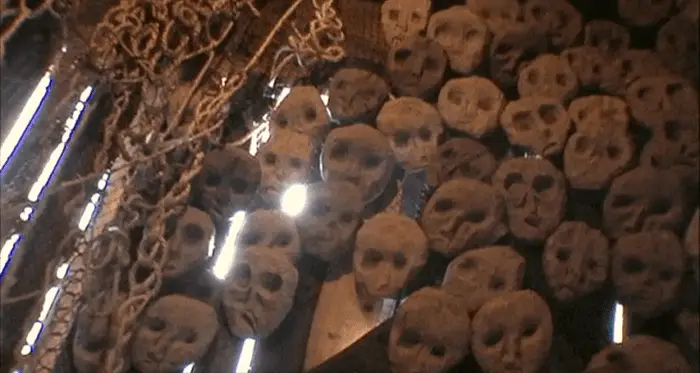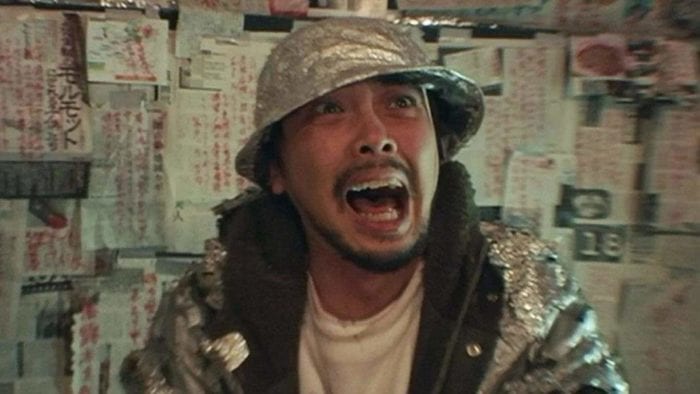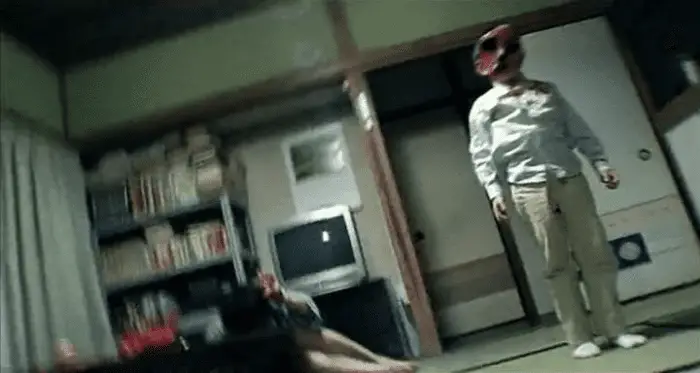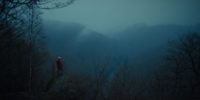Found footage is, to me, a gigantic mixed bag when it comes to the quality of its installments. There’s some really, really good stuff in the horror subgenre like the first two VHS movies, Hell House LLC, The Dirties, and the Creep films. I find that, more often than not, the format is used as an excuse to deliver a cheaply made product that barely entertains. The reason the aforementioned movies work so well is that they actually use the format to inform their stories, rather than using it as a crutch for poor film making. It’s a sadly rare thing to see in the subgenre, but an early example of this being done is Shudder’s Noroi: The Curse.
For those not in the know, despite only just recently becoming available to stream on Shudder, Noroi is actually a relatively old movie. It originally dropped in 2005, only a few years after the mega-success of The Blair Witch Project that launched found footage horror into the mainstream consciousness. It received an extremely limited release and was sadly tough to come by for quite a long time, but it’s thankfully on Shudder now, and that’s a huge win for the platform because Noroi is a slow, slow-burning story drenched in dread.

On the surface, there isn’t much differentiating Noroi from other found-footage horror films. It’s about a paranormal investigator named Masafumi Kobayashi trying to get to the bottom of mysterious reports of a woman and her son bringing subdued chaos wherever they go. In one neighborhood, people reported hearing crying babies coming from their house, and dead birds begin showing up all around the property. Eventually, it’s discovered that this, and many other disturbing incidents, are tied to the curse of an entity known only as Kagutaba.
Demonic stories in found footage are a dime a dozen (just look at the Paranormal Activity movies), but Noroi successfully sidesteps the common tropes and pitfalls associated with the genre by presenting everything as a slow-burn investigation. You might know the broad strokes of the tale, and the movie straight up tells you in the very beginning that Kobayashi disappeared after his house burnt down, but that doesn’t make the specifics of this mystery any less creepy.
And that’s really the best word for the overall mood Noroi creates. Contrary to most other entries in the subgenre, it forgoes loud jump scares in favor of low key, startling revelations. A lot of scary events happen off-screen; for instance, at one point, the neighborhood where the woman and son Kobayashi is investigating used to reside has a rash of suicides, but we only really see the aftermath of it. Then, the characters in the woman’s current neighborhood begin to worry that they will suffer the same fate.
Keeping in line with a lot of J-horror, Noroi’s threat is more of a phenomenon than a straight-up haunting. It isn’t confined to one location and is instead more about how the curse affects those at its epicenter. One recurring character is Mitsui Hori, a psychic man who becomes more and more unhinged as the film progresses due to the malevolent nature of Kagutaba’s curse. In another movie, this character, who wears tinfoil hats and acts like a child, would come across as comical, but here, he is played completely straight, and the end result is a character who acts as a conduit for the supernatural mystery.

Something else that found footage tends to do is have shaky camera work that disguises its low budget and fails to make the movie feel like a documentary (a common trope in the genre). In Noroi, there are entire sequences that truly do feel like you’re watching an ill-fated documentary about the occult, like one early scene where a young psychic girl named Kana is weeded out among a group of gifted children. Here, the movie embraces tropes of Japanese television, complete with whacky music and odd editing. It’s kind of whimsical and is offset by a later scene that details the summoning ritual for Kagutaba. Here the camera is almost entirely static, and the sound is almost muted apart from the ritualistic drums and clapping the priests do as a part of the ritual. It makes the development of the scene, where one of the priests is attacked by Kagutaba, all the more frightening and overwhelming.
While most of the scares in the movie are low key, there’s one sequence near the end that takes place in the woods at night that stands tall as one of the most frightening sequences in a found-footage horror movie. Without giving too much away, it feels intensely claustrophobic thanks to the dim light from the movie’s camera. It puts you in the shoes of the characters, and you feel just as lost and disoriented as they do. It’s one of the many instances of the movie using its format to enhance the story, and this particular scene ends on an image and sound so downright bizarre that it made my jaw drop (don’t search the movie if you want to keep the scene a surprise).
The restraint shown in other areas of the movie makes these scenes of mounting terror all the more effective. And unlike something like Paranormal Activity, the viewer is never really given an inclination of the true nature of Noroi’s antagonist. Kagutaba’s influence is felt in almost every frame of the movie, but we never see a direct manifestation. It almost evokes the feeling you get when you hear about a great tragedy—you feel removed from it because you didn’t experience it firsthand, but it still manages to get under your skin. It understands that the human mind can create something much scarier than anything a filmmaker can, and wisely leaves much of its terror up to the viewer.

At two hours long, you could argue that Noroi: The Curse is a bit long for the subgenre. And while I would argue that you really need to know what you’re getting into and be mentally prepared for it, that runtime allows its slow-burning dread to build and build in a way that many other found footage movies don’t allow. It shows restraint in areas that other movies might not, and is all the more memorable for it. It serves as an early example of how found footage can be used to enhance a story, and should be considered a classic of the subgenre.


